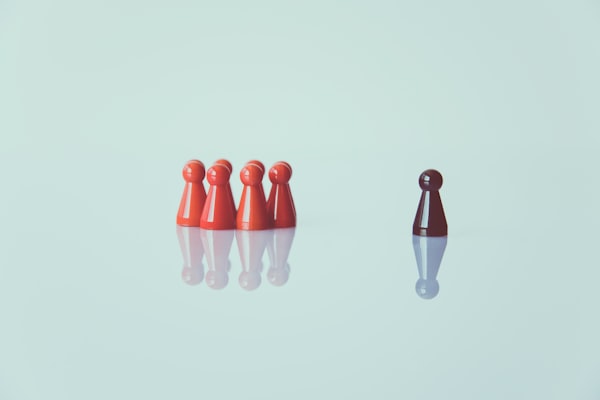How to Annihilate Procrastination and Achieve Buttery Execution
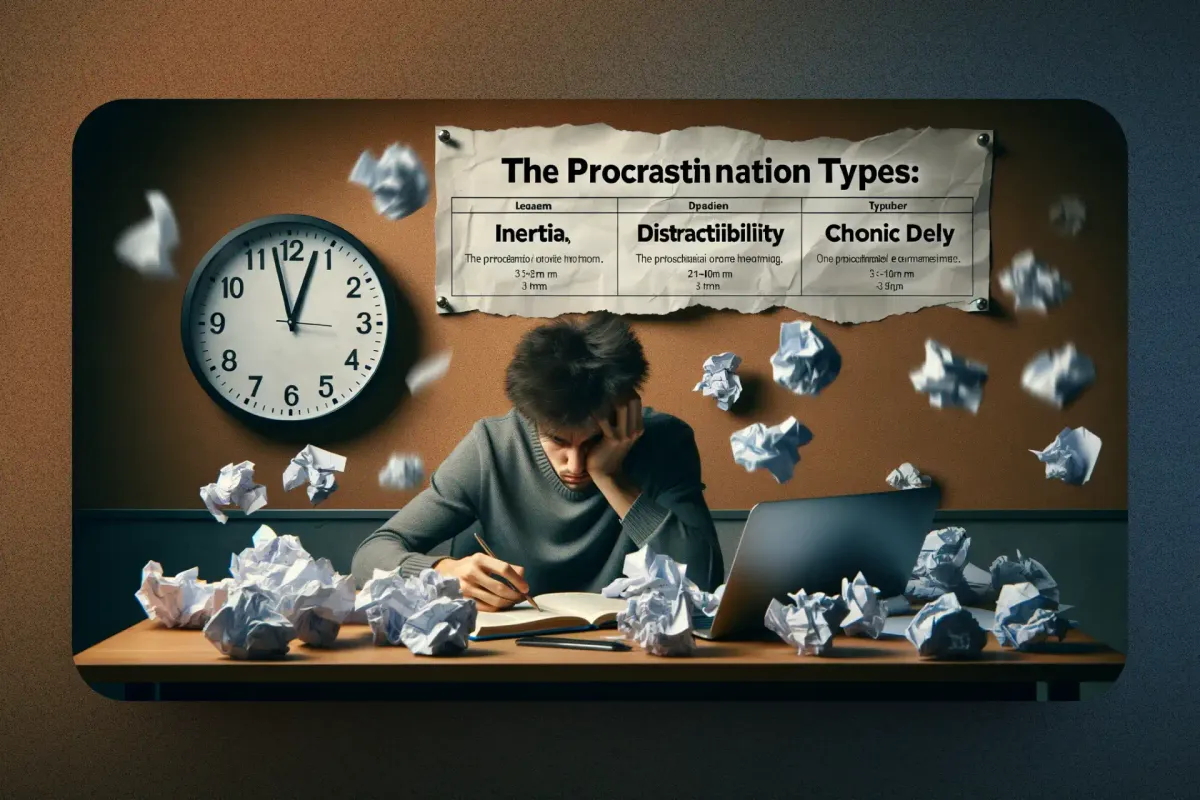
We've all dealt with procrastination at some point. You know you should start on an important project, but you continuously put it off. Or you've begun working on something but get distracted by the slightest thing. Procrastination prevents us from engaging in meaningful work and achieving our goals.
In this comprehensive guide, I'll outline the root causes of procrastination and provide science-backed solutions to eliminate it from your life. You'll learn:
- The 3 main types of procrastination and how to overcome them
- How "flow" states allow peak performance and productivity
- Why procrastination is an evolutionary adaptation - and how to hack it
- How to use "flow triggers" to get sucked into your work
- Why you procrastinate most right when you wake up - and what to do about it
Let's annihilate procrastination and achieve what I call "buttery execution" - where your mind effortlessly glides into your most important work.
The 3 Procrastination Types: Inertia, Distractibility, and Chronic Delay
First, it's helpful to understand the different forms procrastination takes:
Inertia - You know you should start a task, but can't get going. You have the motivation and time blocked off, yet still avoidance.
Distractibility - You start working but any slight distraction pulls you away. Your attention scatters and your time is squandered.
Chronic Delay - You continually postpone goals and projects, always telling yourself "someday." But you never move past the starting line.
While the manifestations differ, in all cases procrastination prevents progress on meaningful goals. Let's explore what's happening underneath the hood...
Why We Procrastinate: The Neuroscience of Approach-Avoidance
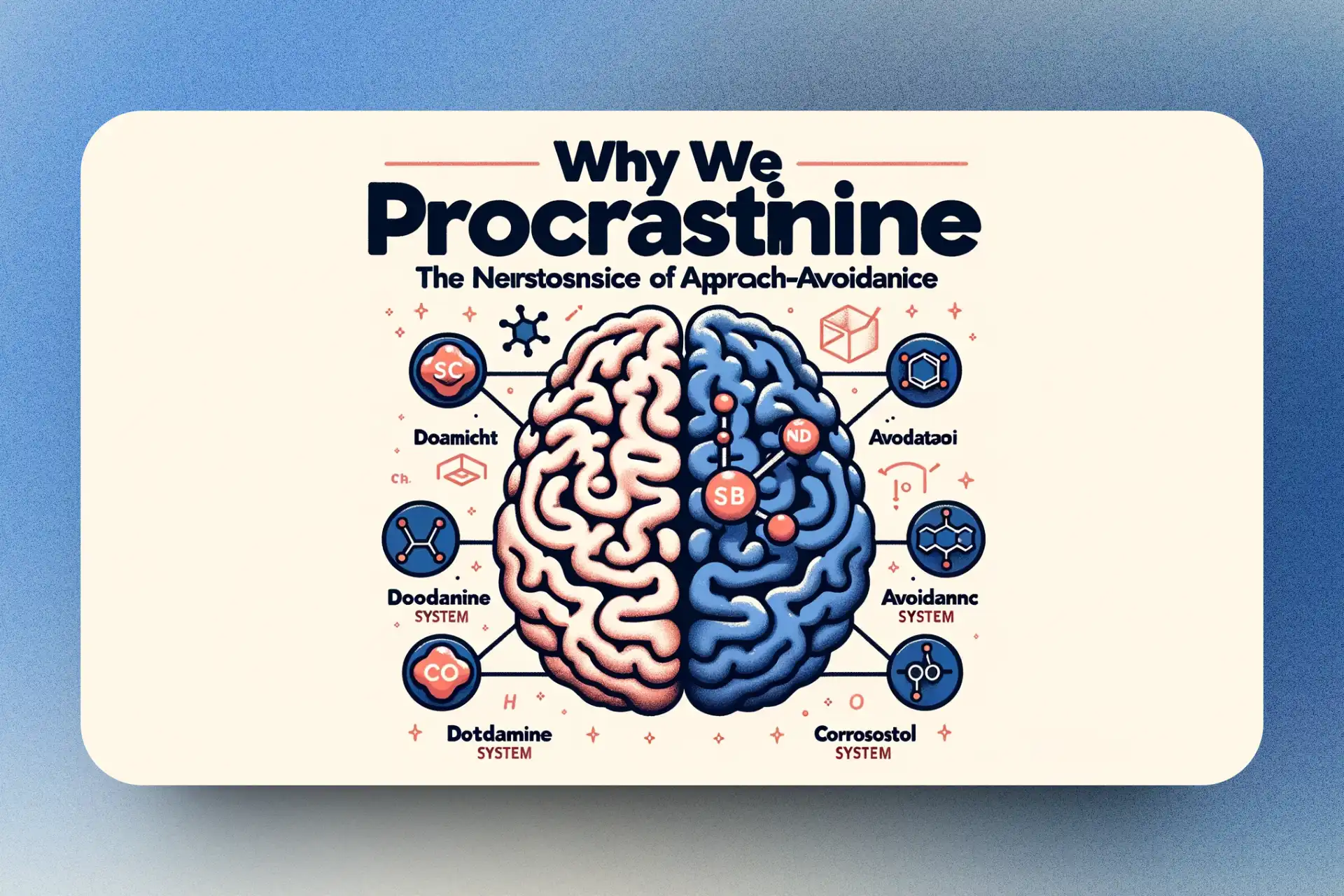
Contrary to popular belief, procrastination is not a motivation problem. In fact, procrastination often arises from HIGH motivation coupled with avoidance. This dichotomy causes procrastinators intense inner turmoil and frustration.
The source is a neurological "tug of war" between approach and avoidance motivations in the brain. Specifically, it's a clash between the:
- Approach system (driven by dopamine), which encourages reward-seeking behavior
- Avoidance system (driven by cortisol), which discourages actions that may lead to harm/loss
Dopamine amplifies craving and wanting. Cortisol increases fear and anxiety.
As you move closer to a task, cortisol-induced anxiety rises, strengthening avoidance tendencies. But as you move away, dopamine-induced desire becomes more salient, strengthening approach tendencies.
This dual stimulation explains the painful procrastination paradox - wanting to do something yet avoiding it nonetheless.
Ultimately, this "approach-avoidance conflict" blocks us from entering flow states where peak productivity occurs. To overcome procrastination, we must transcend this neurological catch-22.
Hacking the Approach-Avoidance Conflict With "Flow"
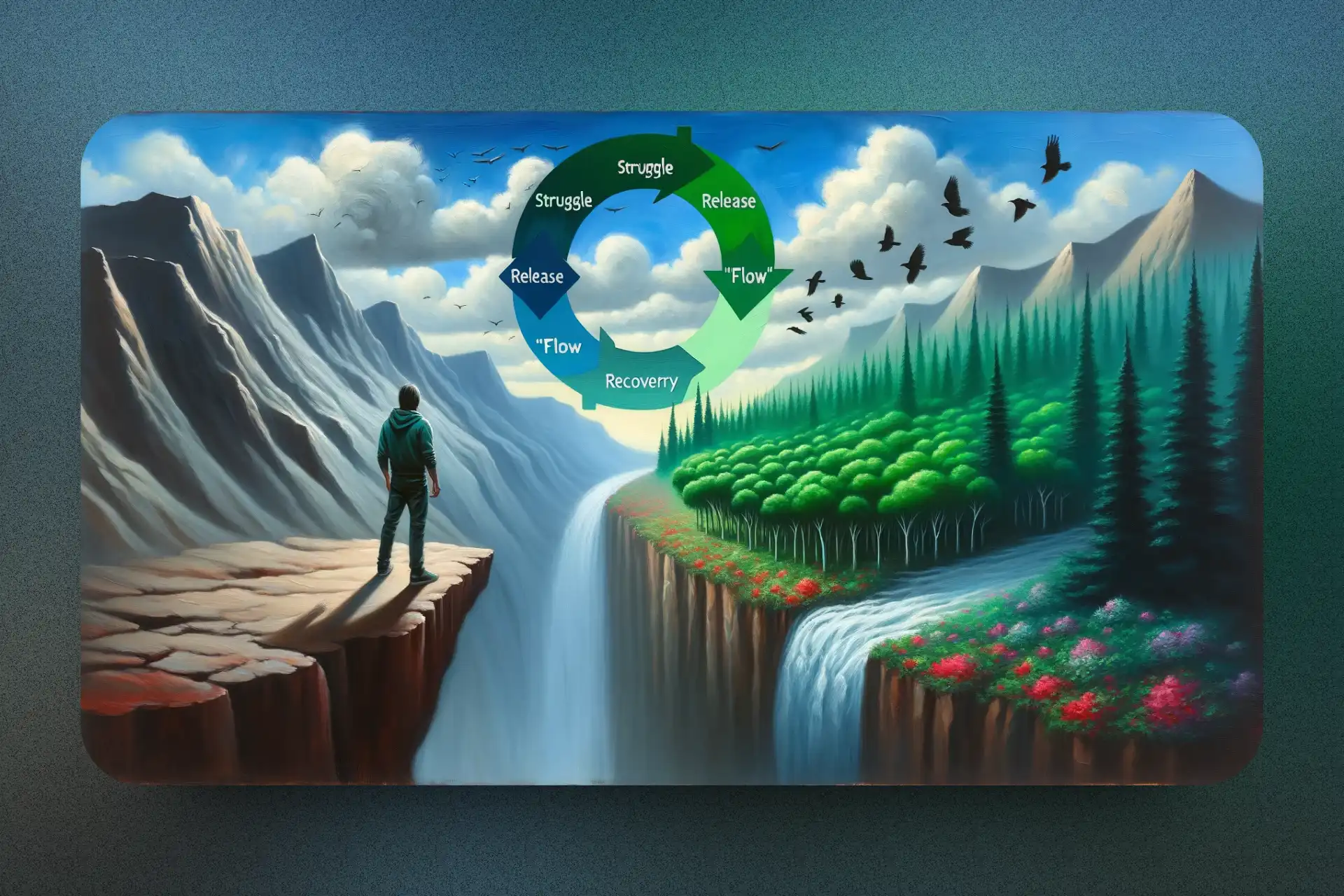
For over a decade, psychologist Mihaly Csikszentmihalyi researched individuals who frequently entered "flow" states - a state of optimal focus and immersion in a task.
He found flow isn't random, but triggered by specific conditions. Harnessing these "flow triggers" allows us to overcome procrastination.
Understanding the Flow Cycle
Contrary to belief, flow isn't binary. Rather, it's a cycle with 4 main phases:
- Struggle - Wrestling with frustration and discomfort to fully engage in the task.
- Release - Reaching the "edge" of persistence. Pain subsides and relief sets in.
- Flow - Effortless absorption in the task. The sense of "self" evaporates.
- Recovery - Replenishing energy after the flow state.
For knowledge workers, there's often a hidden 5th phase needed before struggle: the decision to engage with the task itself. This critical phase is the most challenging and where procrastination blocks the flow cycle.
Let's explore how to "hack" the approach-avoidance conflict using flow triggers to enter this cycle seamlessly.
Flow Trigger #1: Laser-Focused "Micro" Goals

Csikszentmihalyi discovered "clear goals" as one of the most potent flow triggers. But he emphasized specificity - goals should be laser-focused on the task target rather than the overall outcome.
For instance, the goal is getting the ball in the net, not winning the entire game. This utilizes the brain's basal ganglia, which executes familiar habits efficiently, rather than the prefrontal cortex.
The first step in overcoming procrastination is setting wildly specific, "micro" goals for each task. Break the task down into tiny, ludicrously simple actions.
On paper, map out goals so small that simply achieving one gives you a little dopamine hit. For example:
- Open my laptop
- Pull up Google Doc
- Write opening paragraph
- Insert client data into slide deck
This prevents your brain from wondering "how" or "why". Execution becomes frictionless - your mind slides into focus like a knife through warm butter.
Flow Trigger #2: Balancing Challenge and Skills

Another precondition for flow is optimizing the balance between a task's challenge level and your skills. If the challenge exceeds skills, anxiety results. If skills exceed the challenge, boredom results.
You want the challenge to be around 4% greater than current skill level - enough stretch to fully engage your abilities.
There are three ways to harness this trigger and regulate the balance to beat procrastination:
1. Lower the Hurdle - Make the initial engagement threshold as low effort as possible. Don't white-knuckle through tasks. Instead, restructure things to require less energy to start.
2. Regulate Time - Give yourself less time for boring tasks, raising the challenge level. Give yourself more time for complex tasks, lowering the challenge.
3. Define Scope - Determine the precise scope and requirements for an ambiguous task. This provides direction and boosts perceived importance.
Optimizing challenge-skill balance diffuses the approach-avoidance conflict, allowing you to smoothly enter flow.
Flow Trigger #3: Bypassing With Response Inhibition

Response inhibition is overriding automatic reactions in favor of goal-oriented actions - like suddenly jumping into a cold pool before you can talk yourself out of it.
It prevents emotions from hijacking self-regulation. If you procrastinate at all before diving in, the risk-averse parts of your brain win.
Likewise, don't give yourself time to procrastinate on tasks. Use response inhibition to rapidly engage before avoidance tendencies arise.
For instance, I'd train myself to cold call potential clients immediately upon arriving to the office. My conscious brain overrode fear and avoidance. Over time, this built response inhibition like a muscle.
You can also harness biological response inhibition. Our mirror neurons activate shortly after waking, allowing quick engagement for a few minutesbefore avoidance systems boot up.
Try beginning an important task immediately upon waking, before distractions seduce you. The biological momentum makes it easy to override emotions and stick to goals.
Flow Trigger #4: Ensuring The Payoff
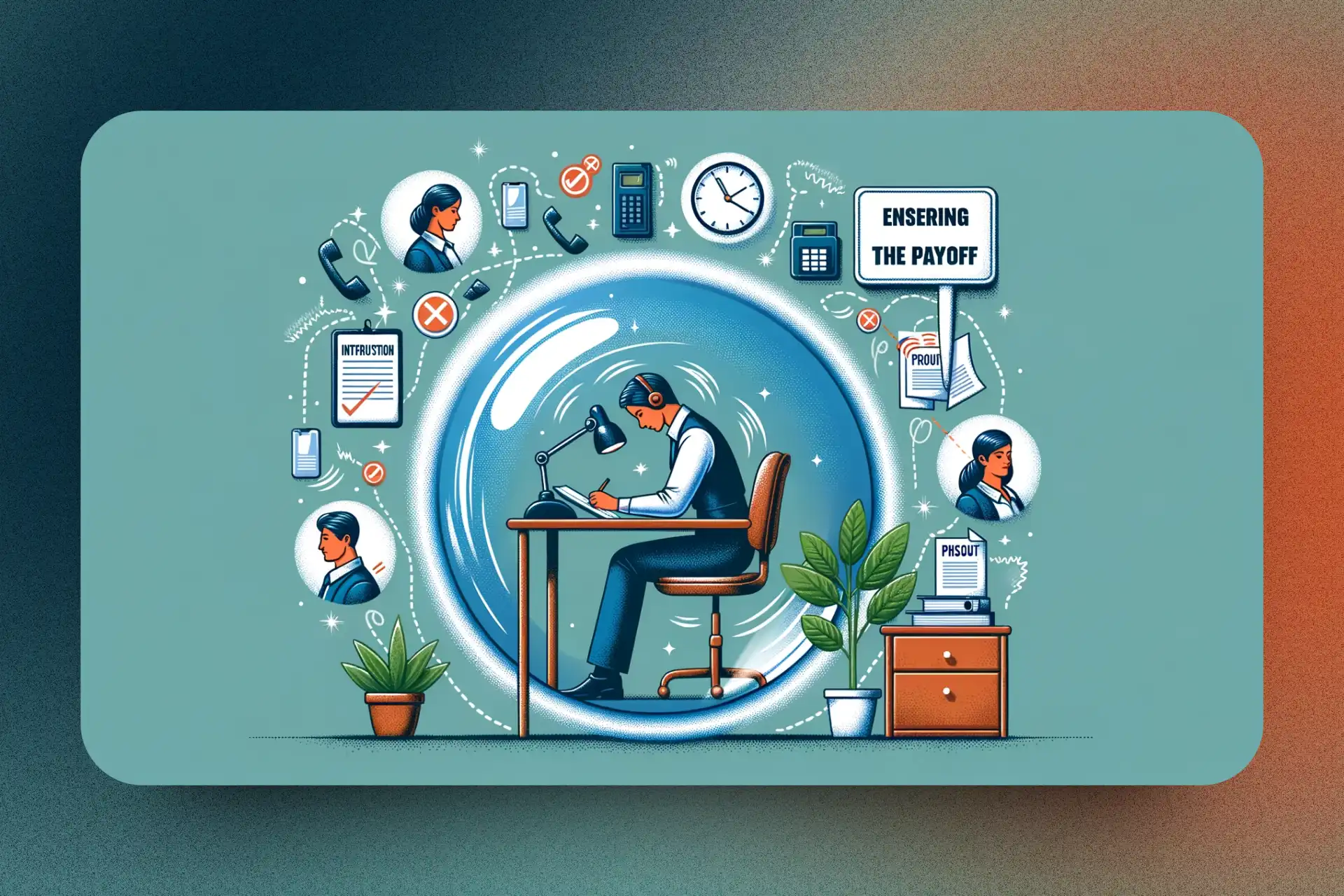
While flow is pleasurable, you need confidence you'll sustain it long enough to justify the struggle.
It's hard to commit to focus if you know you'll likely be interrupted soon after. You want to be sure of reaching the wave rather than having the ocean go flat.
To earn the payoff, batch communication and meetings outside your most productive hours. Bookend meetings around your "flow blocks" of uninterrupted work.
Prevent a Swiss cheese schedule by collapsing meetings. The flow payoff for important work then motivates starting the struggle phase.
When Procrastination is Really Ambivalence
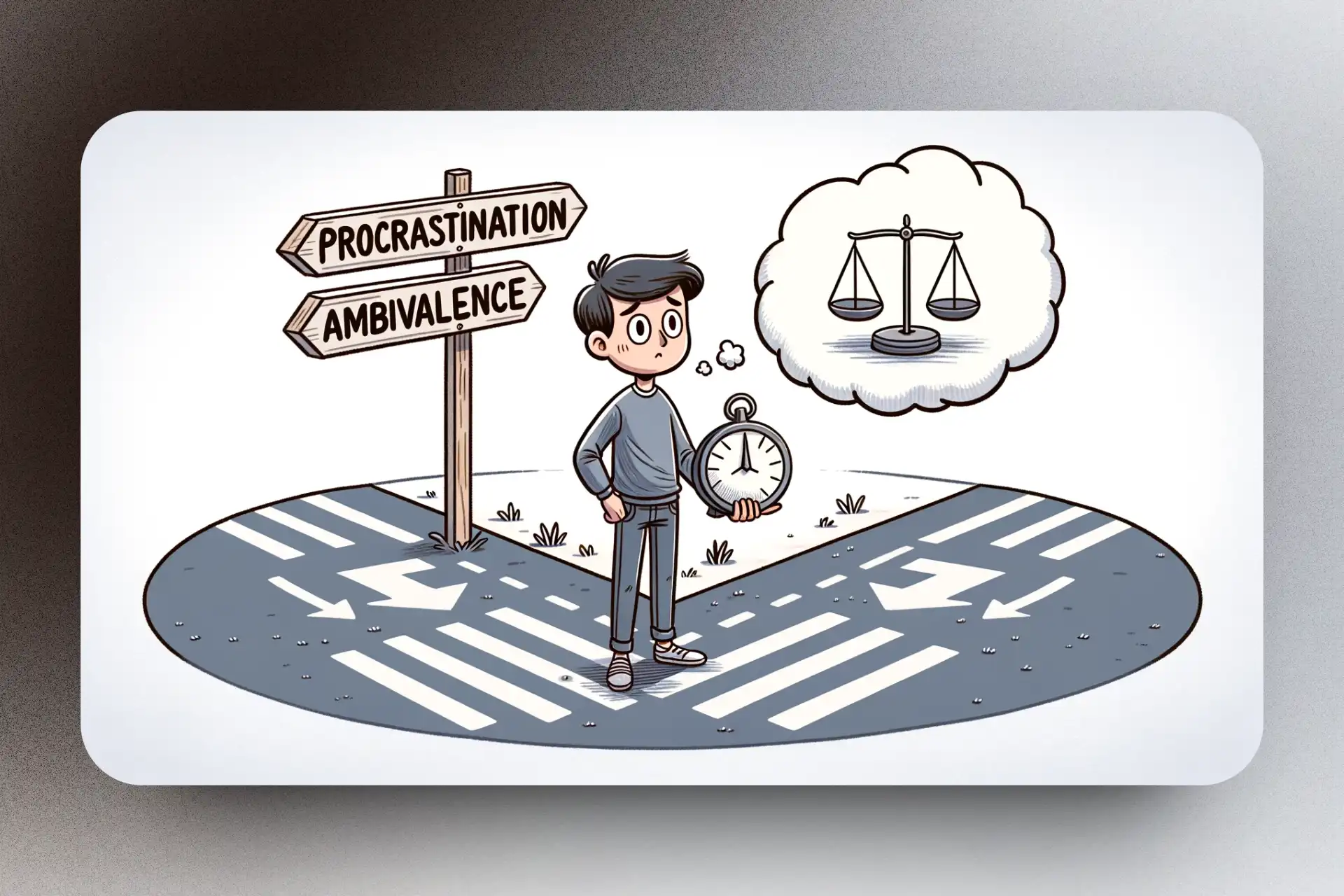
Sometimes procrastination is actually ambivalence - an intuitive sense you shouldn't be doing the task.
For instance, I once delayed meetings for a costly new project. This signaled low-level discomfort - some part of me knew it wasn't right for the business at the time.
Had I dismissed the avoidance as mere procrastination, I may have made an expensive mistake. Instead, I listened to the ambivalence and called off the project, saving major time and money.
Learn to distinguish procrastination from your deeper wisdom. While procrastination should be overcome, ambivalence provides important insight to re-evaluate your goals.
Takeaways: How to Annihilate Procrastination for Good
Here are the key lessons on conquering procrastination through flow:
- Set wildly specific "micro" goals to slide easily into tasks
- Optimize challenge vs. skills by lowering hurdles, regulating time and defining scope
- Use response inhibition to rapidly engage before avoidance emotions arise
- Guarantee a flow payoff by batching communication and blocking distractions
- Distinguish procrastination from ambivalence, which signals re-evaluation may be needed
At its core, procrastination seeks to avoid expending energy. But by tricking your brain through flow triggers, you can latch your mind onto meaningful work and ascend to new heights.
The commitment to persist despite discomfort leads to extraordinary results over time. Master the science of flow, and procrastination becomes irrelevant. Unlock buttery execution, where hard work becomes frictionless flow.
What strategies have been most helpful for you in overcoming procrastination? I'd love to hear your insights and experiences in the comments below!




